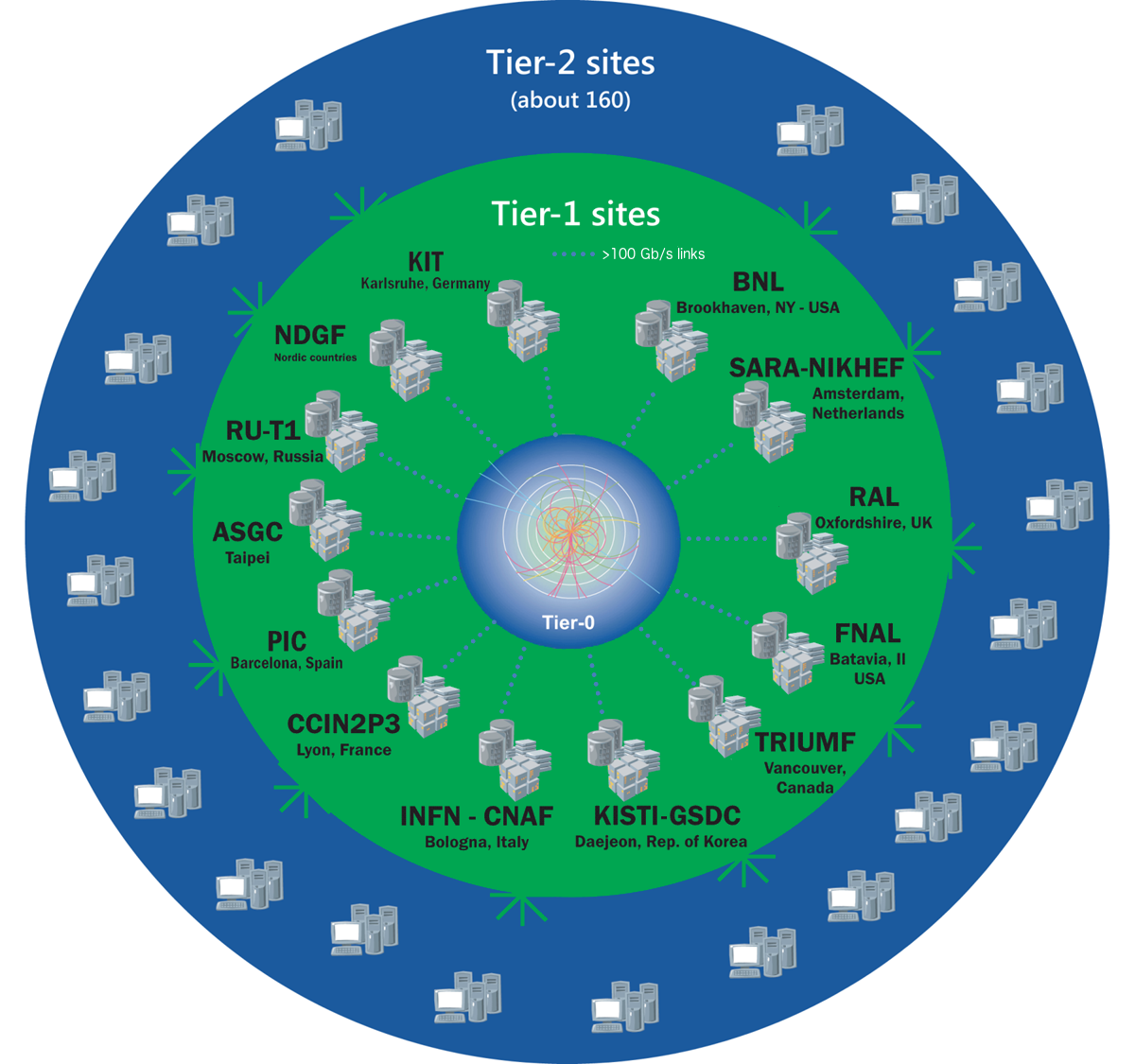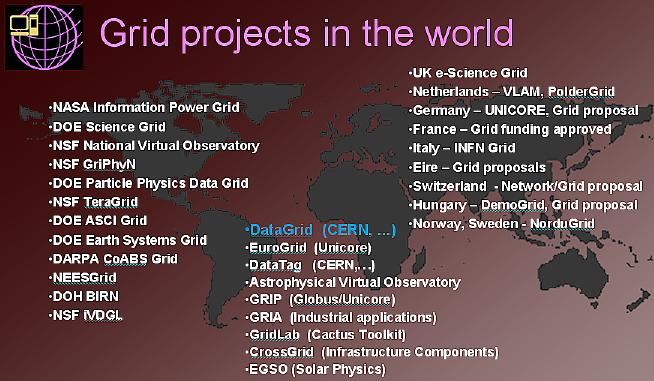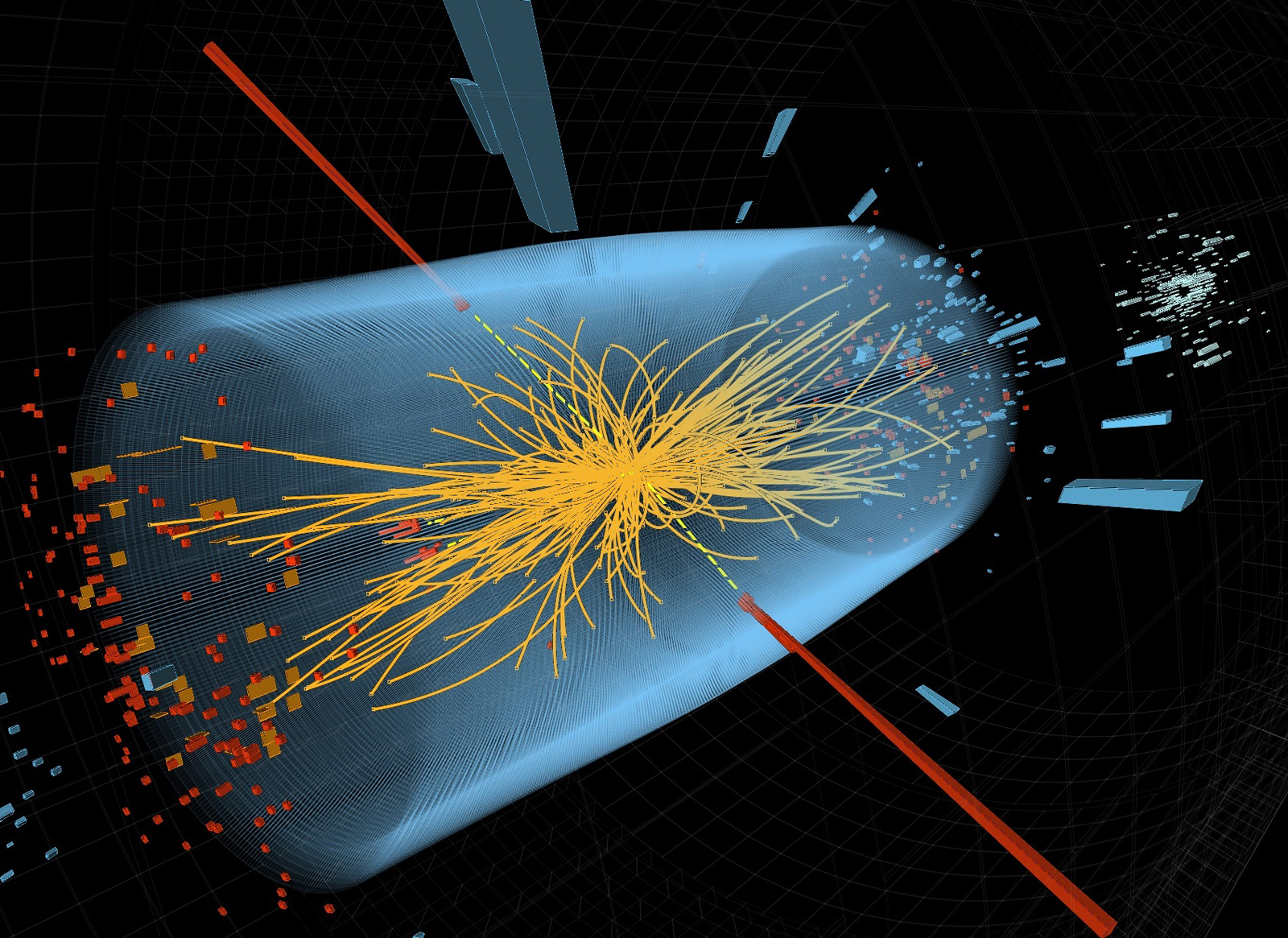Taking a closer look at LHC
LHC will be producing roughly 15 Petabytes of data annually, which thousands of scientists around the world will access and analyse. LHC detectors are gigantic digital cameras that examines the millions of collisions per second and identifies which ones should be stored and analyzed in more detail.
The mission of the Worldwide LHC Computing Grid (LCG) project is to build and maintain a data storage and analysis infrastructure for the entire high energy physics community that will be using the LHC.
The data from the LHC experiments will be distributed around the globe, according to a four-tiered model. A primary backup will be recorded on tape at CERN, the “Tier-0” centre of LCG. After initial processing, this data will be distributed to a series of Tier-1 centres, large computer centres with sufficient storage capacity and with round-the-clock support for the Grid.
| The Tier-1 centres will make data available to Tier-2 centres, each consisting of one or several collaborating computing facilities, which can store sufficient data and provide adequate computing power for specific analysis tasks. Individual scientists will access these facilities through Tier-3 computing resources, which can consist of local clusters in a University Department or even individual PCs, and which may be allocated to LCG on a regular basis. |  |

(Taken from https://wlcg-docs.web.cern.ch/outreach/images/WLCG-Tiers-2021_v3.png)
Grid computing connects computers distributed over a wide geographic area. Just as the World Wide Web enables access to information, computing grids enable access to computing resources. These resources include data storage capacity, processing power, sensors, visualisation tools and more. Grids can combine the resources of thousands of different computers to create a massively powerful computing resource, accessible from the comfort of a personal computer and useful for multiple applications in science, business and beyond.
The Worldwide LHC Computing Grid relies on dedicated optical fibre networks to distribute data from CERN to eleven major computer centres in Europe, North America and Asia. From these, data is dispatched to more than 140 centres around the world. Together, these distributed computers provide the power to manage the LHC’s data.
The Worldwide LHC Computing Grid combines the IT power of more than 140 computer centres, the result of collaboration between 33 countries. Signatories to the Worldwide LHC Computing Grid are: Australia, Austria, Belgium, Canada, China, the Czech Republic, Denmark, Estonia, Finland, France, Germany, Hungary, Italy, India, Israel, Japan, Republic of Korea, the Netherlands, Norway, Pakistan, Poland, Portugal, Romania, the Russian Federation, Slovenia, Spain, Sweden, Switzerland, Taipei, Turkey, the United Kingdom, Ukraine, and the United States of America
GRID: Is a service for sharing computer power and data storage capacity over the Internet. The Grid goes well beyond simple communication between computers, and aims ultimately to turn the global network of computers into one vast computational resource.
Visit the next link for more information

|
AUTHORS Xabier Cid Vidal, PhD in experimental Particle Physics for Santiago University (USC). Research Fellow in experimental Particle Physics at CERN from January 2013 to Decembre 2015. He was until 2022 linked to the Department of Particle Physics of the USC as a "Juan de La Cierva", "Ramon y Cajal" fellow (Spanish Postdoctoral Senior Grants), and Associate Professor. Since 2023 is Senior Lecturer in that Department.(ORCID). Ramon Cid Manzano, until his retirement in 2020 was secondary school Physics Teacher at IES de SAR (Santiago - Spain), and part-time Lecturer (Profesor Asociado) in Faculty of Education at the University of Santiago (Spain). He has a Degree in Physics and a Degree in Chemistry, and he is PhD for Santiago University (USC) (ORCID). |
CERN CERN Experimental Physics Department CERN and the Environment |
LHC |
IMPORTANT NOTICE
For the bibliography used when writing this Section please go to the References Section
© Xabier Cid Vidal & Ramon Cid - rcid@lhc-closer.es | SANTIAGO (SPAIN) |



